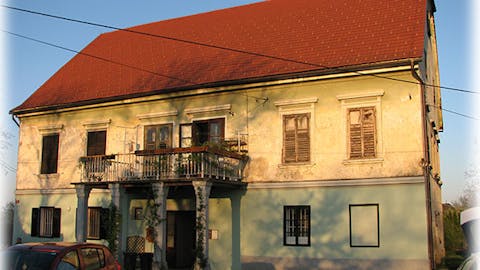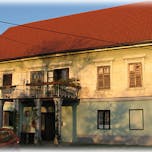
Miklavž na Dravskem polju Municipality
Miklavž Manor
The manor stands on the Drava terrace, beneath which springs of fresh drinking water once emerged and flowed into a stream. These springs gave the place its original name Studenec (“spring”), and when the Church of St. Miklavž was built, the settlement’s name was also changed.
Throughout history, Miklavž Manor has had numerous owners. Until around 1490, the building was in the possession of the provincial prince, then it became the property of the Zekel family (a Germanized name of the Hungarian noble family Szekely) as part of the estate office. In 1555 the estate was annexed to the independent office of Betnava, after which it remained in the possession of the Herberstein family until 1648, when it was purchased by Count Jurij Jernej Khisl, who subordinated it to the large Spodnji Maribor estate. In the 18th century it was inherited by the Brandis family, and in 1745 Miklavž Manor was once again purchased by a member of the Herberstein family. Later, ownership changed hands rapidly. After the agrarian reform in the first Yugoslavia, the manor became the property of the Drava Banovina, which established a men’s prison in it. After the Second World War, the owner of the manor was the Institute for the Serving of Sentences Maribor. Since Slovenia’s independence, the manor has been converted into private apartments.
Today, Miklavž Manor is a two-storey, six-by-three-axis building with a large balcony supported by four stone pillars in the center of the main façade. The portal is wide, semicircular, and fitted with Classicist doors. While the present building dates from the first quarter of the 19th century, its appearance is Neo-Renaissance from the late 19th century. Although now remodeled for residential use, the manor still clearly reveals its feudal origins.
